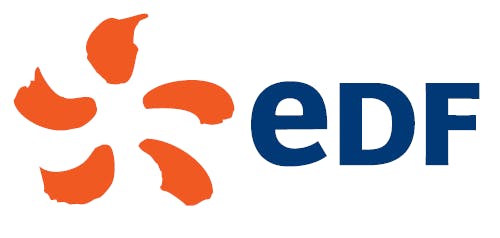1. The group, its strategy and activities
1.3 Group strategy and objectives1.3 Group strategy and objectives
1.3.1 Environment and strategic challenges
Energy efficiency and low-carbon electricity are at the heart of energy transition.
The fight against climate change is a major challenge for the planet. The agreement reached in Paris at the 21st session of the Conference of Parties (COP 21) in 2015 has confirmed the effort being made to combat climate change and the ramping up energy transitions beyond Europe.
In Europe, the Clean Energy Package finalised in 2019, the Green Deal developed in 2020 and the “Fit for 55” climate package proposed by the European Commission 2021 provide the framework of measures that can enable the European Union to become carbon-neutral by 2050. Recovery programmes in the wake of the Covid-19 health crisis have made climate issues an even higher priority.
The EU’s Green Deal and the related national programmes are set to focus on cutting CO2 emissions as a priority, and as competitively as possible, drawing on a locally-rooted industrial vision.
The UK, which must undertake a major renewal of its electricity generation facilities, adopted the Climate Change Act in 2008 and established a market model that is consistent with that policy (comprising a Carbon Price Floor, Contracts for Difference, capacity market, and consideration of a regulated asset base model for new nuclear generation facilities).
Electricity in France accounts for some 25% of final energy consumption, but only just over 12% of CO2 emissions (1) (the international figures are 20% (2) and 41% (3) respectively). France’s “Climate and Energy” Act (loi relative à l’énergie et au climat) of 8 November 2019 places cutting greenhouse gas emissions at the hearts French energy policy. The goal is now “becoming carbon-neutral by 2050 by cutting greenhouse gas emissions more than sixfold”. France’s Multi-Year Energy Programme (Programmation pluriannuelle de l’Énergie, PPE), which lists the broad outlines of French energy policy, sets out a ten-year vision, which is vital for major industrial players. EDF agrees with the PPE’s analysis, in particular in terms of identifying leverage to eliminate fossil energy.
To reach these objectives, the two major levers of actions are:
- lowering energy consumption by developing energy efficiency solutions (downstream); and
-
switching from fossil fuel to carbon-free energy sources, with carbon-free electricity first and renewable heat (upstream).
Transition to a carbon-free economy is needed, but this should be achieved whilst preserving households’ purchasing power and companies’ competitiveness.
Innovation, both upstream and downstream, will be an essential factor in these goals being successfully achieved.
1.3.2 Priorities of the CAP 2030 strategy
EDF’s raison d’être is “To build a net zero energy future with electricity and innovative solutions and services, to help save the planet and drive well-being and economic development”. Drawing on the contribution of employees during the “Let’s Talk Energy” (Parlons Énergies) dialogue, the raison d’être was added to the Company’s by laws at the Shareholders’ General Meeting held on 7 May 2020. The CAP 2030 strategy reflects EDF’s raison d’être.
The EDF group produces some of the least carbon-intensive electricity in the world. In 2020 EDF made new greenhouse gas reduction commitments by 2030; these have been validated by the Science Based Targets Initiatives organisation as being ahead of the COP21 2°C ambition.
For the first time, the EDF group has set itself targets that cover not only its direct emissions but also its indirect emissions. The aim is to adopt a trajectory whereby the Group contributes to achieving carbon neutrality for its entire carbon footprint by 2050. By 2030, EDF aims to reduce its direct and indirect emissions by 50% compared to the 2017 level of emissions and to reduce its scope 3 emissions by 28% compared to the 2019 level (see also section 3.1 “Carbon neutrality and the climate”).
For EDF, the fight against climate change is based on energy decarbonisation, as a means of reducing the carbon intensity of consumption, and energy efficiency.
The Group’s strategy is structured around three strategic axes, which are expounded in the CAP 2030 strategy:

Three strategic axes
to decarbonise our societies in France, in Europe and in the world:
A creator of services and solutions to support customers and territories in the shift towards carbon neutrality
- >15 MtCO2 avoided emissions(1)
- €10 bn revenue in services(3)
- >1,5 contracts/customer(2)
A global leader in the generation of CO2 -neutral electricity
 50% emissions CO2 eq vs 2017
50% emissions CO2 eq vs 2017- 60 GW nets >x2 renewable capacities (incl. hydro) vs 2015
- Initiating new EPRs & 1 SMR
An international key player in the energy transition
- Exit coal
- 1.5 - 2 GW nets hydro installed capacity(4)
- 1 million kits off grid
Perimeter:
- (1) Customers, Services & Territories sector’s activities
- (2) EDF estimate : France, UK, Italy and Belgium (Residential).
- (3) Group.
- (4) Excluding priority countries in Europe (France, Italy, UK et Belgium).
(1) Source: French Ministry for Ecological Transition, Chiffres clés du climat (Climate: Key Figures), 2022 edition, page 38.
(2) International Energy Agency, World Energy Outlook 2021, Table A.2a page 295.
(3) Source: French Ministry for Ecological Transition, Chiffres clés du climat (Climate: Key Figures), 2022 edition, page 38.
